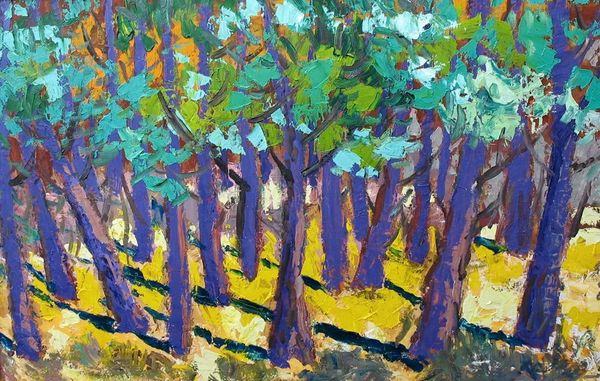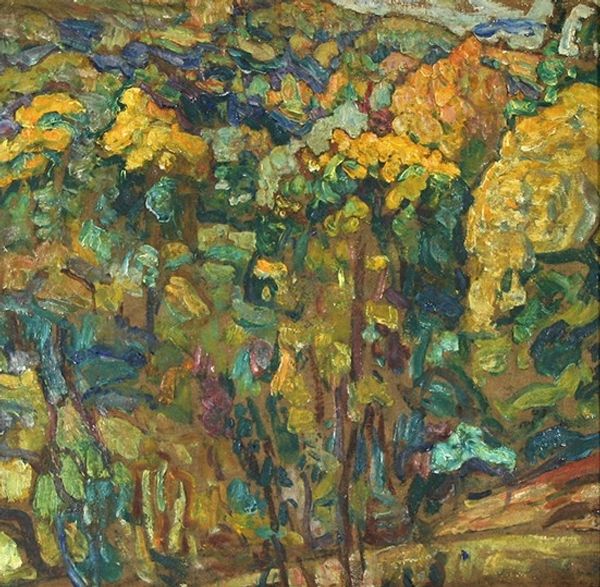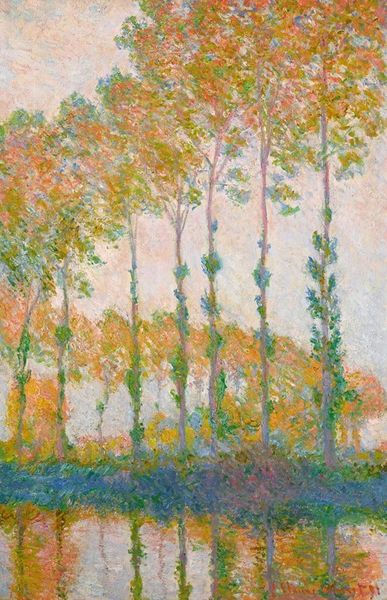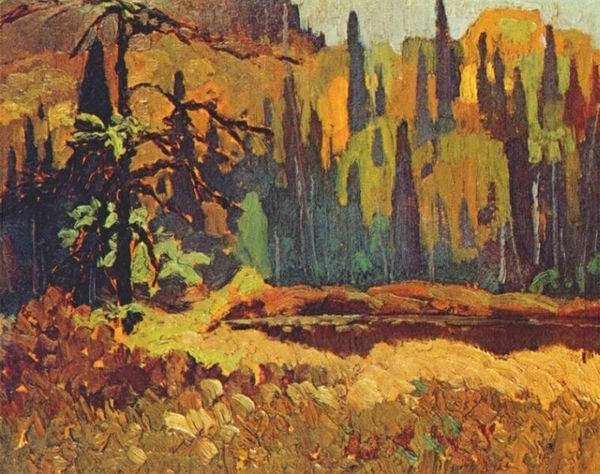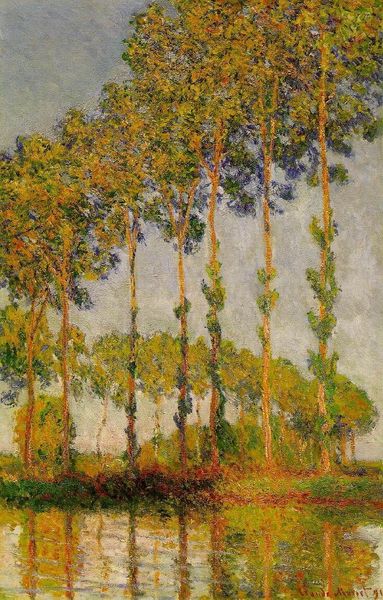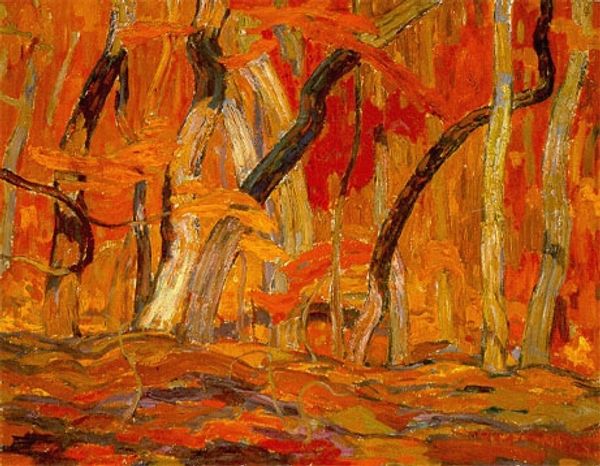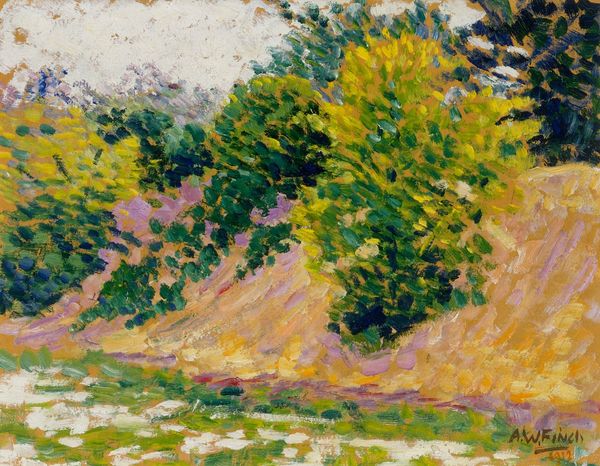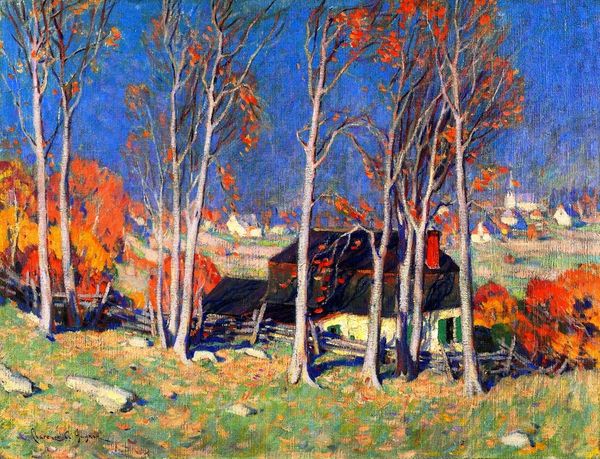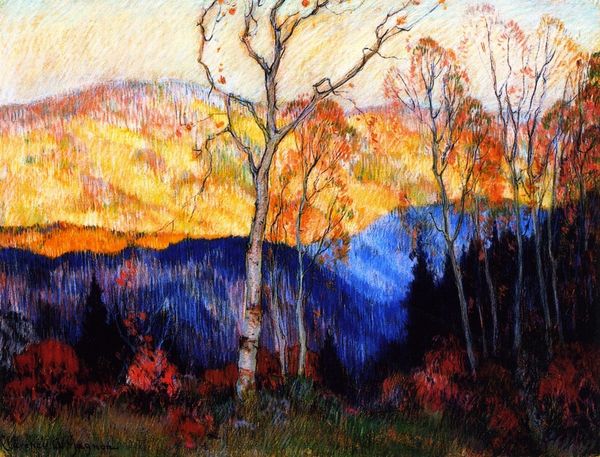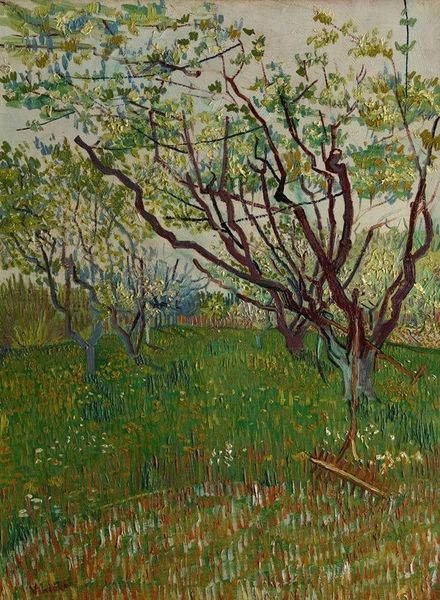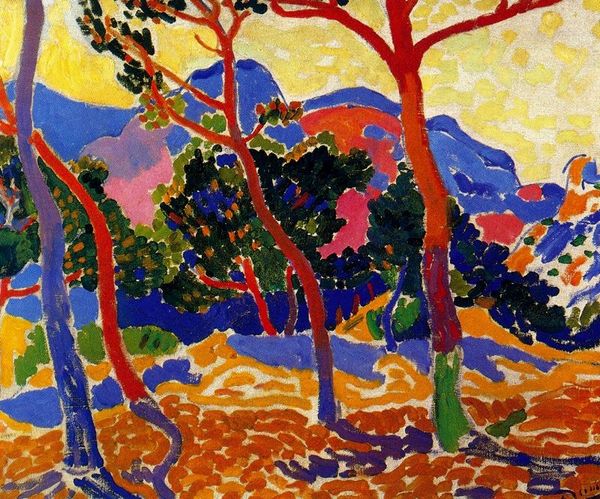
Copyright: Public domain
Editor: We're looking at Frank Johnston's "Patterned Hillside" from 1918, an oil painting with a very distinct use of brushstrokes. It's a lively scene, but almost feels frozen in time. What’s your take on it? Curator: I see a landscape, yes, but one that's pushing against the traditional, almost a proto-abstract expression. Think about the context in 1918. World War I was ending, societies were fractured, and artists were grappling with representing a world in chaos. Does Johnston perhaps use the landscape as a stand-in for broader societal anxieties and upheavals? How might his portrayal of nature relate to these themes of fragmentation and resilience? Editor: So the patterns aren't just decorative, but potentially symbolic? Curator: Precisely. They could symbolize disruption, or even the attempt to rebuild and find order in the aftermath. Consider, too, the rise of industrialization and its impact on the natural world. Is Johnston celebrating nature or lamenting its alteration? It’s significant he paints en plein air – directly experiencing the landscape. Does this add a layer of authenticity or perhaps highlight the artificiality of trying to capture something so immense? Editor: It's interesting to think about the historical moment influencing what I see as just trees and hills. I now realize that its abstraction may have meant something more to its contemporaries. Curator: Exactly. It shows how much historical and cultural lenses influence our perception and how looking at a painting means reading its socio-political text. Editor: I appreciate your insight into seeing beyond just the aesthetic and digging into the "why" behind the art. Thanks!
Comments
No comments
Be the first to comment and join the conversation on the ultimate creative platform.
